Hearing the word ‘hoarder’ brings different things to mind for different people. Many people can identify with hoarding tendencies while others notice them in other people. Regardless of which you are, let’s look at the best decluttering tips for hoarders who want help.

Defining hoarding
Before we go further into the topic of hoarding, it’s important to define what we are talking about. I often hear people throw the word around, so I want to make sure it is clear what hoarding is.
The following information is from the Mayo Clinic,
The signs of hoarding may include:
- Excessively acquiring unneeded items even without space for them
- Ongoing difficulty letting go of things regardless of their value
- Feeling a strong need to save items and upset at the idea of letting go
- Building up of clutter to the point where rooms become unusable
- Tendencies toward indecisiveness, perfectionism, avoidance, procrastination, and difficulty with planning and organizing
The outcomes may include:
- Disorganized piles or stacks of items, such as newspapers, clothes, paperwork, books or sentimental items
- So many belongings that rooms or spaces can become unusable for their intended purpose
- Significant problems functioning or keeping yourself and others safe in your home
- Conflict with others who try to reduce clutter from your home
- Difficulty organizing items and losing important items in the clutter

Some of the reasons people with a hoarding disorder save are:
- Belief items are unique and will be wanted or needed in the future
- Items serve as a reminder of happier times or people that are gone
- They feel safer being surrounded by their things
- A desire to not have anything go to waste
The following information is from Psychiatry.org.
Risk factors involved with hoarding include:
- Personality. Many people with a hoarding disorder are indecisive.
- Family history. There’s a strong association between having family members with a hoarding disorder and having one yourself.
- Stressful life events. A hoarding disorder can arise after stressful events.
Hoarding is different than collecting. People with a hoarding disorder tend to save random items in a haphazard fashion. They feel they may need the item in the future and being surrounded by their stuff helps them to feel safe.
Hoarding disorder only occurs in 2-6% of the population. A defining factor of hoarding disorder is that it impairs normal daily life and function. The most common demographic is males between the ages of 55 and 94.
Hoarding disorder vs. hoarding tendencies
The percentage of people who meet the definition of hoarding disorder is quite low, but if you feel that you meet the criteria and your life is being significantly impaired by clutter, seek professional help.
A therapist will be able to help walk you through the process. I am in no way qualified to do that. What I can provide are tips and insights on how to work through the decluttering process.
Maybe you read the descriptions and while you don’t think you’d qualify as having a hoarding disorder, you do relate to some of the hoarding tendencies. Everyone has their reasons for hanging onto clutter.
In either case, the following decluttering tips for hoarders will also help those with hoarding tendencies.
Keep in mind that if you are trying to help a hoarder, they need to want the help. Forcing anyone to let go of things they don’t want to never ends well.
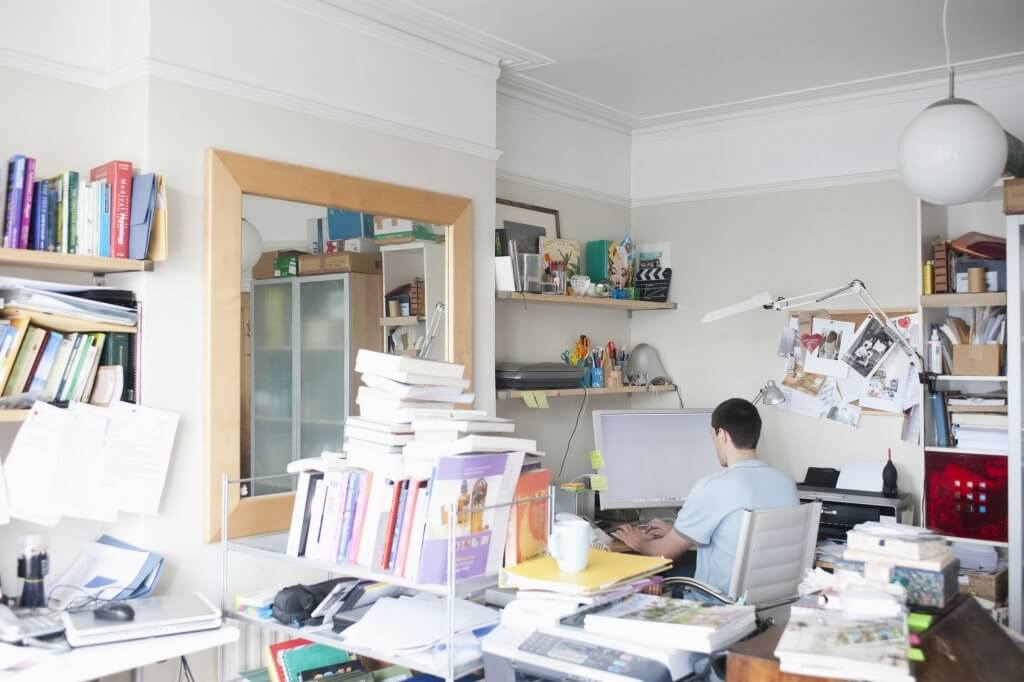
Best decluttering tips for hoarders
These decluttering tips for hoarders, or those with some hoarder tendencies, will help you get started on your decluttering journey.
Enlist help
If the thought of decluttering has you completely overwhelmed, enlist a trusted friend or family member to come help you. If you are someone who has trouble making decisions, having another person there who will be honest with you is really helpful.
When you’re indecisive, it’s easy to spin your wheels when you try to declutter. And then you don’t get any traction. You can hire someone to help you, but if that isn’t feasible, look to a trusted friend or family member who will at least help you get started.
Assessing goals and motivation
Before getting started decluttering, you should define your goals. If you don’t have a clear goal, you won’t be as motivated through the decluttering process.
How do you want your home to look, feel, and function differently? Write it down. You can download your free declutter plan of attack by filling out the form below.
If you are having trouble coming up with your goals, talk it through with a close friend or family member. Again, if you are struggling with changing anything as the clutter is significantly impairing your life, therapy is helpful.
Come up with a game plan
Now that you’ve set your goals, it’s time to create your game plan for how to begin decluttering your home.
1. Remove trash:
Your first step is to remove any obvious trash from the home. Depending on the severity and duration of the hoarding, there may be quite a bit of trash.
2. Declutter large items:
The next goal is to declutter large items. The purpose of removing some of the bulkier and larger items now is to help create more space to work.
It’s very challenging to declutter when there is no space to work. Having a cleared out area will make it easier to sort.
3. Go room by room:
After you’ve cleared out the bigger items, the next step is to declutter room by room. Start with a room where it will be easier to make decisions and work your way up to more difficult areas.
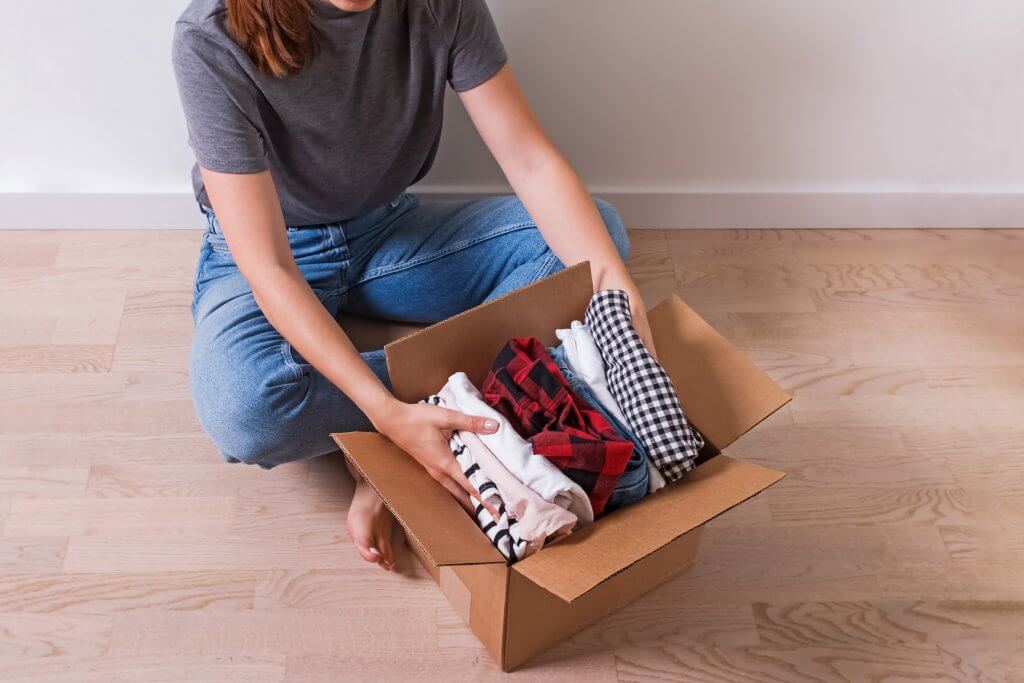
Ask good questions
As you go through each room and try to determine what is clutter, ask yourself good questions to determine if the items should stay or go.
Don’t expect that making decisions will come easily. It does however tend to get easier as you practice.
If you aren’t sure even after answering the decluttering questions, wait to decide on that item until you’ve done the other ones in that room or section. Your answer may be clearer then.
Work on one section at a time
Consider the decluttering process to be a marathon, not a sprint. This is especially true when you’ve had a lot of items accumulating over a long period of time, which makes this one of the more important decluttering tips for hoarders.
Don’t get ahead of yourself. Focus on one section of a room at a time. Trying to declutter too many places at once ends up creating frustration and overwhelm.
Pace yourself. You can do this. You’ll save yourself a lot of headaches by focusing on smaller areas as you go.
Take decluttered items out immediately
In order to feel the full impact of decluttering, you need to remove the decluttered items from the space immediately. If you are still tripping over those items, having them take up space, or putting decluttered items back into your home, you’re losing all the benefits of having decluttered.
Figure out the best ways to dispose of your clutter and go ahead and do it. If for some reason you aren’t able to get them out of the house right away, get the items out of your living space if possible.

Save papers & sentimental items for last
The very last items to declutter especially in a home with lots of things and a tendency to hoard is papers followed by sentimental items.
Decluttering papers takes awhile and is likely to slow down your process. It’s a necessary part of decluttering, but can also feel tedious so you want to wait until near the end of the process to take care of it.
The last thing to tackle should be sentimental items. For people with a hoarding disorder or with hoarding tendencies, sentimental items can be very challenging.
You’ll want to have worked on those decision making muscles before making decisions on sentimental items. The earlier practice will make it easier to decide what you want to keep and let go of.
Celebrate your wins
As you go through the decluttering process, celebrate your wins. Think of what would feel celebratory to you. It doesn’t even need to cost anything. Consider what would be a treat for a job well done.
Celebrating your wins along the way will help motivate you to keep going. Decide in advance what your milestones along the way will be.
Consider hosting a gathering for people who’ve helped and supported you along the way at the end. There is no motivation to finish like having people come over to your house.
These decluttering tips for hoarders or those with hoarding tendencies will help you get started and work through the decluttering process. You can do this. It’s all just one step at a time.
Want additional resources?
To help with the decluttering process, I’ve created both a self-paced course called Your Home Decluttered to walk you through each step of the decluttering process as well as a workbook with checklists. The workbook is included with the course if you purchase it, but is also available as a stand-alone option.
I hope that you’ve found these decluttering tips for hoarders helpful whether you are planning to use them yourself or to help someone else.
Want to stay up to date with The Simplicity Habit? Fill out the form below and get weekly tips on decluttering and simplifying your home and your life. You’ll also get the Declutter Plan of Attack to help you get your decluttering goals on paper and help you create a plan.

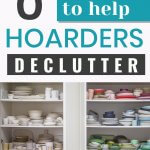

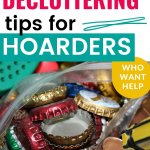
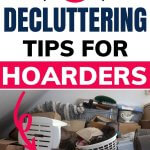





I’ve decluttered a lot of my stuff in the last year. One thing I wish I had done was to take before pictures! There’s such a difference, sometimes we need to go back and see how far we’re come…because we forget!
Great work, Elaine! And I know how you feel. I often forget to take pictures too in my excitement to get the work done 🙂
how do you deal with post hoarder ?guilt & a dealing with the loss?
Very good simple plan and I had started before I read this..
I was the family slave because of the chaos of a psychotic “mother.”
My father was at wits end ..nothing he did was acceptable…
I started very early taking care of myself ..then scrounging to cook dinner..etc..The only solution was for me to do it…
More and more I did everything..I had to make “silk purses out of sows ears” to get the house in order..
Then she got a job and forced the sale of the house so even though she was getting alimony…
NO AMOUNT OF MONEY SATISFIED HER…she did this just after she drove my sister into a very expensive mental hospital..she did not help my father with one penny…
She impoverished all of us..but we wanted to keep my sister where she was recovering..SO my father, other sister and I lost everything..
I have had to struggle ever since…so EVERYTHING has to be kept if needed…
BUT…I am working on all the past abuse now…and paring down to essentials only
is NOW going to be my new life.